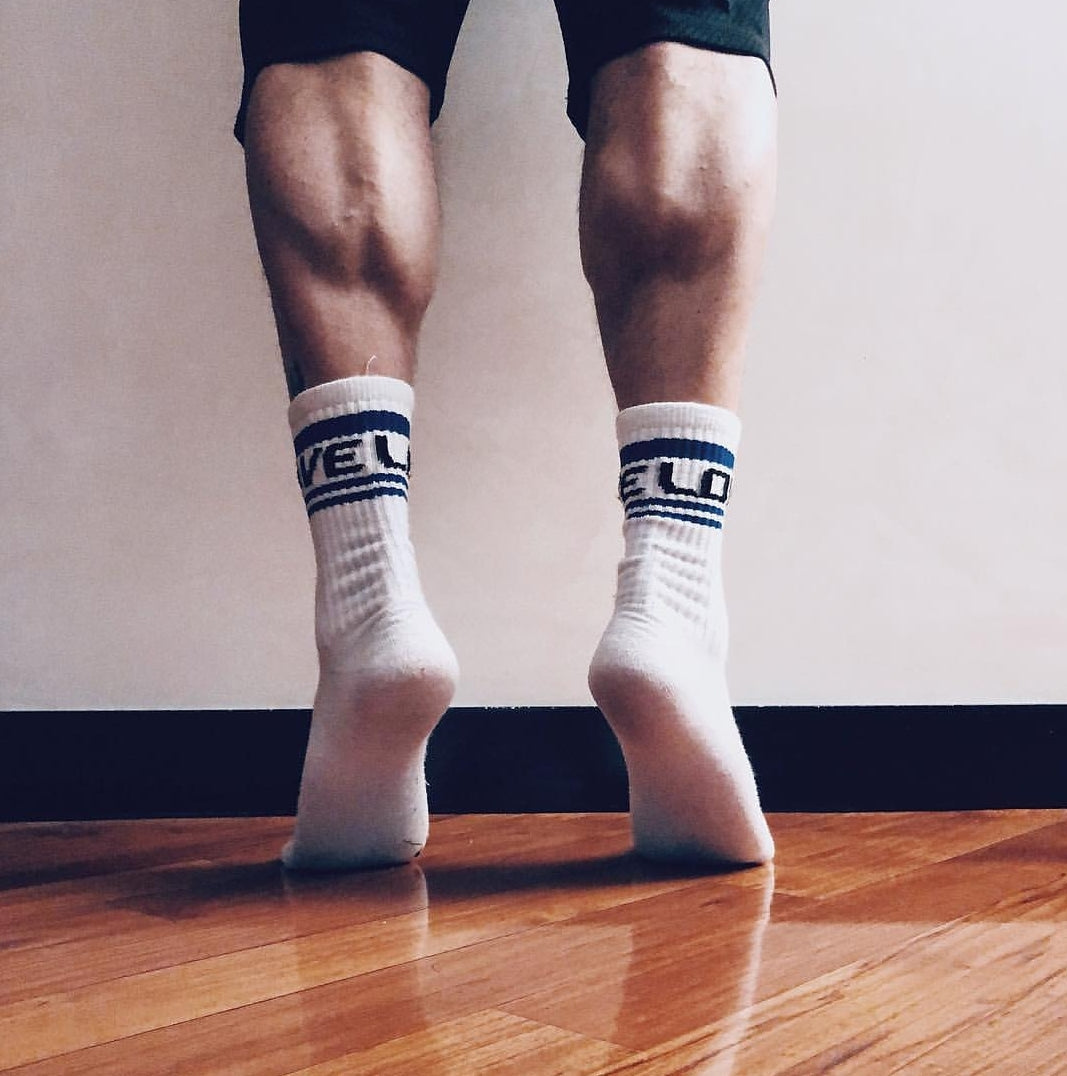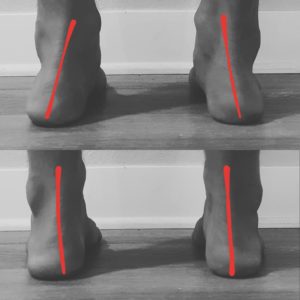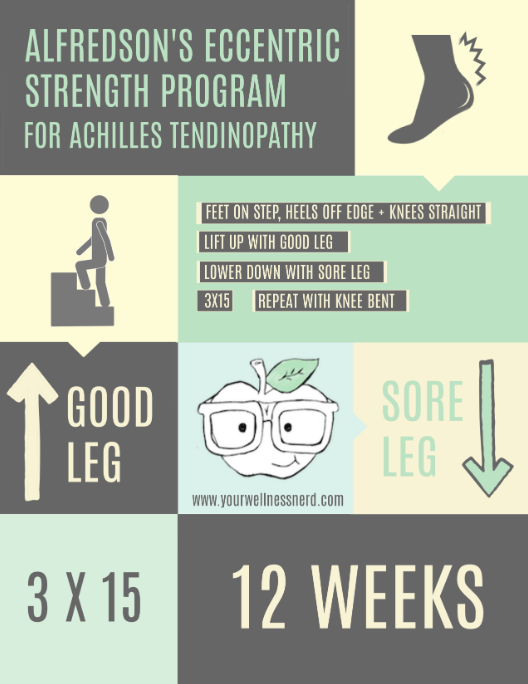
Achilles Tendonitis Treatment: Beyond Overuse - The Real Causes & Solutions
people suffer Achilles tendon injuries each year, yet 31% occur in people who aren't rigorously active
Table of Contents
Understanding Achilles Tendonitis: More Than Just Inflammation
If you're reading this, there's a strong chance you, or someone you know has Achilles tendonitis. As a Physiotherapist, I completely understand how frustrating this condition can be - it's hard to shake quickly and can genuinely persist for months.
The Achilles tendon is one of the biggest and most robust tendons in the body, yet it's estimated over 1,000,000 people a year suffer an Achilles tendon injury.
Beyond Overuse: What We're Missing About Achilles Pain
We typically view Achilles tendonitis as an overuse injury associated with repetitive activities like walking, running, sprinting, and jumping. While this makes sense on some levels, I've always had an issue with "overuse" as an explanation.
Consider these crucial points:
- Approximately 31% of Achilles tendonitis occurs in people who aren't rigorously active
- Most people develop Achilles tendonitis on just one side
- Those with bilateral tendonitis usually have one side worse than the other
Achilles Rupture: The Worst-Case Scenario
Clearly the worst-case scenario for an Achilles injury is a complete rupture, as Golden State Warrior Kevin Durant can unfortunately attest:
From my experience, the same mechanical flaws that lead to tendonitis often set the stage for more severe injuries like ruptures. The consequences differ, but the underlying mechanisms may be similar.
The Hidden Mechanical Causes of Achilles Tendonitis
From my clinical experience, Achilles tendonitis has almost everything to do with how we load the Achilles tendon, not just load in general.
To put things simply: the Achilles tendon likes to be loaded relatively vertically. This becomes clear when looking at someone from behind:


Good standing, walking and squatting mechanics will keep the Achilles relatively straight up and down. So what causes the poor orientation shown above?
Two Overlooked Mechanical Faults
1. Ankle Stiffness
Mechanically, ankle stiffness forces your entire leg to compensate as it tries to find a workaround. If you don't have the immediate range of motion your body needs, it'll go looking for it somewhere else. This leads to:
- Feet that rotate out
- Knees, shins, thighs, and hips that rotate in
- Reduced shock absorption capacity
2. Tightness at the Front of the Hip
Anterior hip tightness forces similar compensations, often characterised by walking with feet turned out. You can test this yourself:
- When walking, notice where your feet point
- If they turn out, try straightening them
- You'll likely feel tightness at the front of your hip as your back leg trails behind
The Role of Flat Feet
Collapsed arches often accompany Achilles tendonitis, but here's the crucial insight: flat feet and Achilles issues are both consequences of the same broad mechanical faults, not cause and effect.
You can observe this yourself:
- Take your shoes off
- Without lifting your feet, gently rotate your knees inwards and outwards
- Notice how your arches lift when knees rotate out and collapse when knees rotate in
Comprehensive Treatment Approach
Traditional Achilles tendonitis treatment often includes Alfredson's eccentric strength program:

This program involves eccentric (lengthening under tension) strengthening and can take up to 12 weeks to remodel and restrengthen the area. Other treatments typically include massage, taping, heel lifts, rest, anti-inflammatories, and ice.
Essential Stretches & Exercises for Recovery
When treating Achilles tendonitis, consider moving beyond basic passive stretch holds and incorporate these more effective approaches:
Banded Ankle Stretch
The best way to improve ankle flexibility quickly while targeting deep capsular stiffness:
Couch Stretch
Excellent for targeting stiff hip flexors and quads - the "anti-sitting" stretch:
Pigeon Stretch
Restores rotational hip mobility and addresses tight external rotators:
Deep Squats with Proper Form
Retrains optimal movement patterns while strengthening:
Key points: Keep feet straight, knees rotated out, arches lifted, and Achilles vertically oriented.
Additional Supportive Techniques
- Foam Rolling: Use on calf muscles to feed slack into the Achilles without direct stretching
- Anterior Shin Mobilisation: Address tight tissues crossing the front of the ankle
- Conscious Gait Retraining: Make effort to walk with feet straight
Footwear Recommendations
The best shoes for Achilles tendonitis depend on your goals:
- Symptom Management: Shoes with arch support and a slight heel may help temporarily
- Long-term Solution: Barefoot or minimalist shoes address underlying issues
Frequently Asked Questions
The Achilles tendon is one of the strongest and most robust tendons in the body. It is part of a complex formed by the muscles of the calf and inserts into the heel bone.
Achilles Tendonitis can often feel like a sharp pain with exercise and use.
Traditionally, Achilles Tendonitis occurs at the base of the tendon as it attaches to the heel or around the middle of the tendon.
Achilles Tendonitis is a consequence of poor overall leg mechanics. It is not just an Achilles tendon injury as per general perception. Tendons need to be used and loaded so rest is never the answer. In order to quickly settle your Achilles Tendonitis, it is important to free up any ankle stiffness, strengthen the tendon with eccentric exercises and improve your overall leg mechanics.
Recovery from Achilles Tendonitis can vary based on its severity and the length of time before commencing treatment. General recovery can take 4-6 weeks once the tendon has been remodeled and loaded more appropriately. Chronic cases are common, mainly because the broader mechanical issues aren't addressed, or the tendon is not given an appropriate chance to settle.
The short answer is - it depends. Ultimately, Achilles Tendonitis is an issue with the way the Achilles is loaded over time, not that it is being loaded. With this in mind, walking is highly appropriate for Achilles Tendonitis as long as you have begun to improve the mobility of your ankle, the strength of your calf and broader leg mechanics.
Like many tendon issues, an untreated Achilles tendon injury may become a chronic injury. Unlike many general injuries, an Achilles Tendonitis is not cured through rest. It is not a condition where we need to wait for the tendon to settle. Instead, we need to go after the broader mechanical issues that caused the tendon to fail when it did.
Absolutely. You should always expect your Achilles Tendonitis to go away. However, the catch is that you need to actively work on correcting the broader mechanical faults that lead the Achilles to become dysfunctional. This requires a proper assessment of your low back and entire leg to establish which areas are stiffer, tighter and weaker than they should be.
Final Thoughts: A New Perspective on Achilles Recovery
If you're dealing with any level of Achilles dysfunction and pain, take a step back and consider the bigger picture. Yes, the tendon is the source of your discomfort, but understanding why it became sore in the first place is crucial for lasting recovery.
- Achilles tendonitis is often about loading quality, not just quantity
- Ankle stiffness and anterior hip tightness are frequently overlooked contributors
- Modern footwear and sitting habits create the perfect environment for these issues
- Comprehensive treatment must address the entire kinetic chain
Continue with your pain management, strength training, and traditional Achilles treatments, but consider adding broader mobility work and movement retraining to address the root causes.
As with any injury, work with a trusted health professional to determine what's specific to your situation. With the right approach, you can not only resolve your current pain but also prevent future recurrences.
This article represents clinical observations from my physiotherapy practice. Individual cases may vary - always consult with your healthcare provider for personalised medical advice.
Need Personalised Guidance?
If you'd like help trying to uncover the underlying cause of your pain or dysfunction, consider booking an online Telehealth consultation with Grant here!


1 comment
Hello! This is a great read – I am (was for the time being) an avid runner and have been dealing with chronic achilles pain in my right leg for the last 6 months, as well as some knee/hip soreness. I recently began to see a PT, who echoed many of the points you made throughout the article. I am curious as to what some good exercises for “mobilizing the front of the shin” are? This has been an area of emphasis for me but I’ve struggled to find stretches that do a good job of opening up the shin. Thanks!